Lars A. Buchhave
Unsupervised Spectral Unmixing For Telluric Correction Using A Neural Network Autoencoder
Nov 17, 2021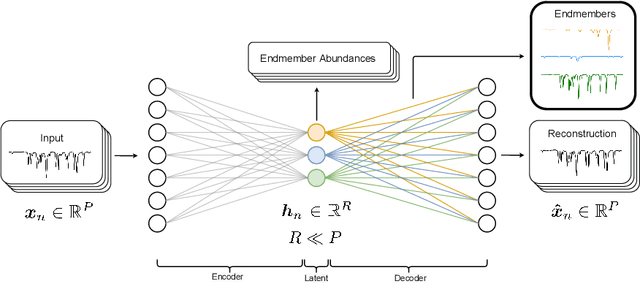
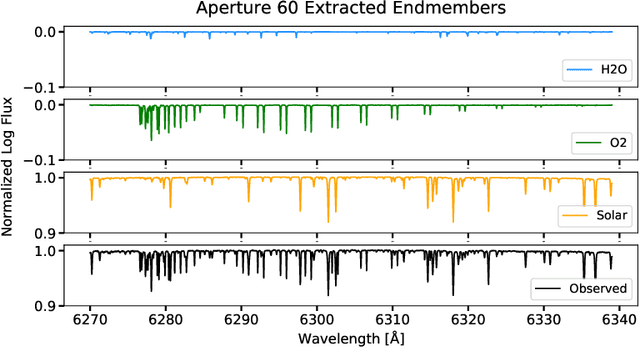

Abstract:The absorption of light by molecules in the atmosphere of Earth is a complication for ground-based observations of astrophysical objects. Comprehensive information on various molecular species is required to correct for this so called telluric absorption. We present a neural network autoencoder approach for extracting a telluric transmission spectrum from a large set of high-precision observed solar spectra from the HARPS-N radial velocity spectrograph. We accomplish this by reducing the data into a compressed representation, which allows us to unveil the underlying solar spectrum and simultaneously uncover the different modes of variation in the observed spectra relating to the absorption of $\mathrm{H_2O}$ and $\mathrm{O_2}$ in the atmosphere of Earth. We demonstrate how the extracted components can be used to remove $\mathrm{H_2O}$ and $\mathrm{O_2}$ tellurics in a validation observation with similar accuracy and at less computational expense than a synthetic approach with molecfit.
Identifying Exoplanets with Deep Learning. IV. Removing Stellar Activity Signals from Radial Velocity Measurements Using Neural Networks
Nov 04, 2020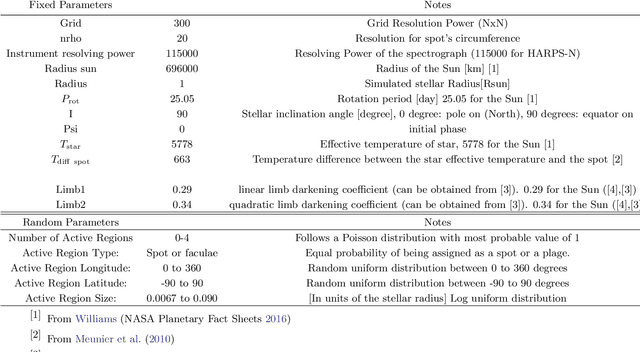
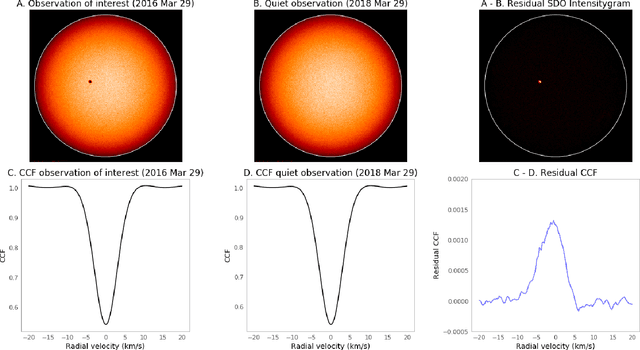
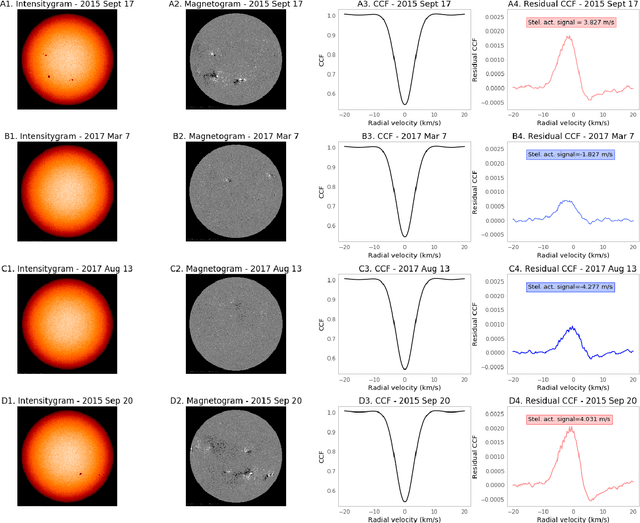
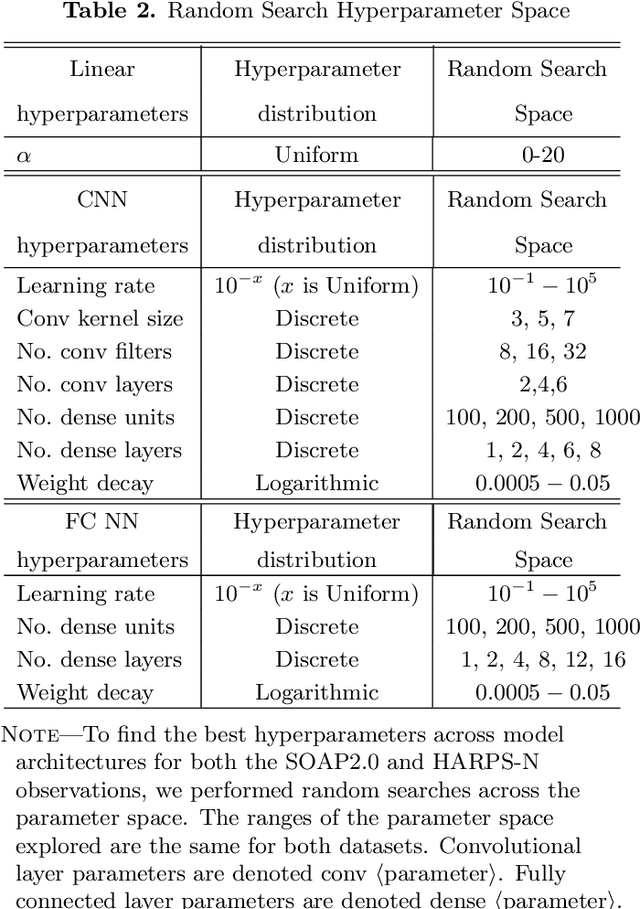
Abstract:Exoplanet detection with precise radial velocity (RV) observations is currently limited by spurious RV signals introduced by stellar activity. We show that machine learning techniques such as linear regression and neural networks can effectively remove the activity signals (due to starspots/faculae) from RV observations. Previous efforts focused on carefully filtering out activity signals in time using modeling techniques like Gaussian Process regression (e.g. Haywood et al. 2014). Instead, we systematically remove activity signals using only changes to the average shape of spectral lines, and no information about when the observations were collected. We trained our machine learning models on both simulated data (generated with the SOAP 2.0 software; Dumusque et al. 2014) and observations of the Sun from the HARPS-N Solar Telescope (Dumusque et al. 2015; Phillips et al. 2016; Collier Cameron et al. 2019). We find that these techniques can predict and remove stellar activity from both simulated data (improving RV scatter from 82 cm/s to 3 cm/s) and from more than 600 real observations taken nearly daily over three years with the HARPS-N Solar Telescope (improving the RV scatter from 1.47 m/s to 0.78 m/s, a factor of ~ 1.9 improvement). In the future, these or similar techniques could remove activity signals from observations of stars outside our solar system and eventually help detect habitable-zone Earth-mass exoplanets around Sun-like stars.
 Add to Chrome
Add to Chrome Add to Firefox
Add to Firefox Add to Edge
Add to Edge